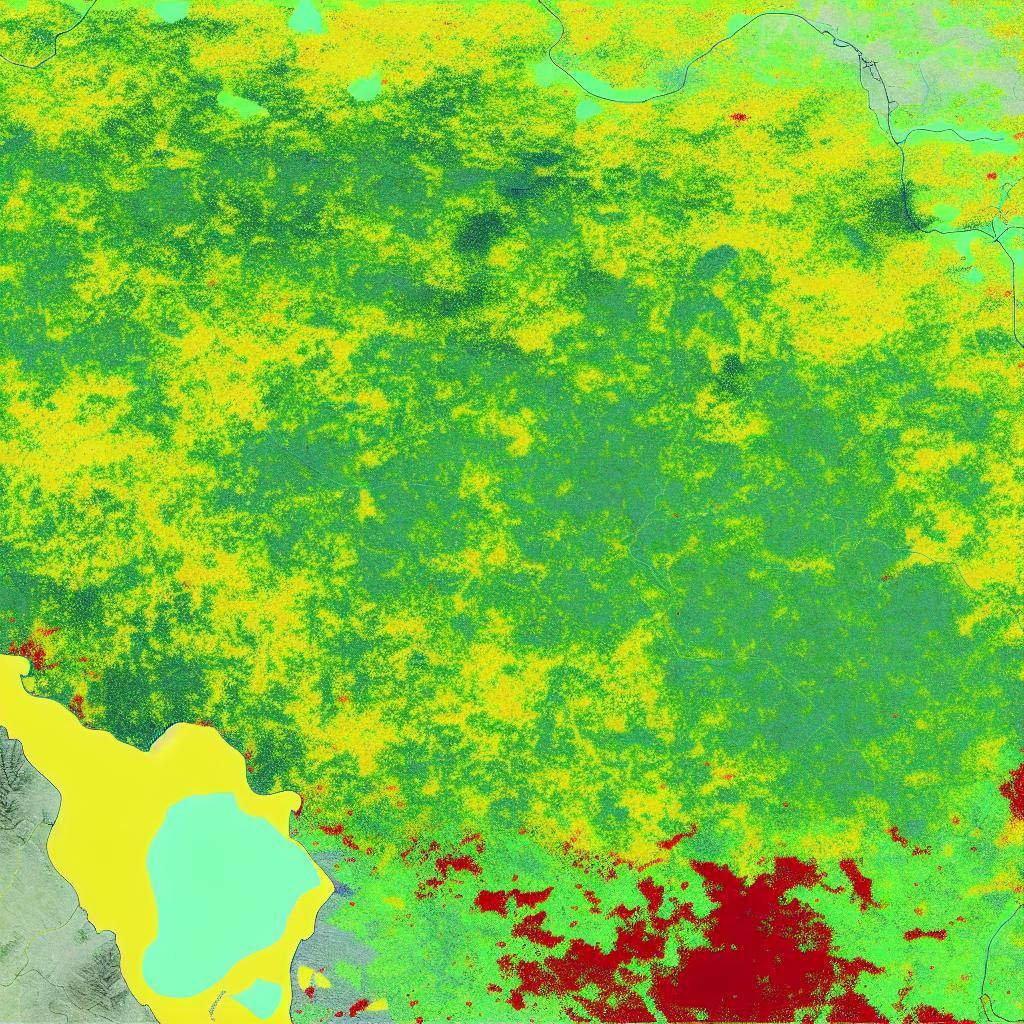Understanding the Normalized Difference Vegetation Index (NDVI)

Explore the significance and application of the Normalized Difference Vegetation Index (NDVI) in remote sensing and environmental monitoring.
What is NDVI and how is it calculated?
The Normalized Difference Vegetation Index (NDVI) is a commonly used vegetation index in remote sensing and environmental monitoring. It quantifies the presence and health of vegetation based on the reflectance of different wavelengths of light. NDVI is calculated using the formula: (NIR - Red) / (NIR + Red), where NIR represents the near-infrared reflectance and Red represents the red reflectance.
By comparing the reflectance of near-infrared and red light, NDVI provides information about the density and vigor of vegetation. Higher NDVI values indicate healthier and more abundant vegetation, while lower values indicate sparse or stressed vegetation. NDVI values range from -1 to 1, with values close to 1 indicating dense vegetation and values close to -1 indicating non-vegetated areas or bare soil.
The calculation of NDVI involves the use of remote sensing data, such as satellite imagery or aerial photographs, which capture the reflectance of different wavelengths of light. These data are processed using specialized software or algorithms to derive the NDVI values for a specific area or region of interest.
Importance of NDVI in monitoring vegetation health
NDVI plays a crucial role in monitoring vegetation health and assessing environmental conditions. By analyzing NDVI values over time, scientists and researchers can track changes in vegetation cover, identify areas of vegetation stress or decline, and monitor the impact of environmental factors, such as drought, deforestation, or land degradation.
Monitoring vegetation health using NDVI is particularly important in the field of agriculture, where it helps farmers optimize crop management practices. By analyzing NDVI data, farmers can identify areas of their fields that require more irrigation or fertilization, detect early signs of crop diseases or pests, and make informed decisions about crop rotation or harvesting.
In addition to agriculture, NDVI is also used in other sectors, such as forestry and land cover analysis. It helps in assessing forest health, monitoring deforestation and reforestation efforts, and mapping land cover changes over time. NDVI can also be used to study the impact of climate change on ecosystems and to evaluate the effectiveness of conservation measures.
Overall, NDVI provides valuable insights into vegetation health and environmental conditions, enabling informed decision-making and sustainable resource management.
NDVI in forestry and land cover analysis
NDVI is widely used in forestry and land cover analysis due to its ability to provide insights into vegetation dynamics and environmental changes. By analyzing NDVI data, researchers and land managers can assess forest health, monitor deforestation and reforestation efforts, and identify areas of potential concern or degradation.
In forestry, NDVI helps in assessing the density and productivity of forest stands, measuring the impact of logging or forest management activities, and monitoring the recovery process after disturbances, such as wildfires or insect infestations.
NDVI is also utilized in land cover analysis to study land use changes, urbanization patterns, and the impact of human activities on ecosystems. It aids in mapping and monitoring vegetation cover, identifying areas of vegetation loss or encroachment, and evaluating the effectiveness of conservation measures or land management strategies.
By combining NDVI data with other remote sensing techniques, such as LiDAR or thermal imaging, a comprehensive understanding of forest and land dynamics can be achieved, facilitating informed decision-making for sustainable land and resource management.
Challenges and limitations of using NDVI
While NDVI is a valuable tool for monitoring vegetation health and environmental conditions, it is important to be aware of its challenges and limitations.
One challenge is the sensitivity of NDVI to atmospheric and environmental factors. Factors like cloud cover, atmospheric pollution, or shadow effects can affect the accuracy and reliability of NDVI values. Therefore, proper calibration and correction techniques are required to mitigate these influences and ensure accurate interpretation of NDVI data.
Another limitation of NDVI is its dependence on the availability of high-quality remote sensing data. The accuracy of NDVI calculations depends on the quality and spatial resolution of the input data, which can vary based on the data source and acquisition method. Additionally, the cost and accessibility of remote sensing data can pose challenges, especially for researchers or organizations with limited resources.
Furthermore, NDVI may not be suitable for all vegetation types and environmental conditions. It is primarily designed for assessing the health and vigor of green vegetation, and its applicability to other types of vegetation, such as shrubs or crops with non-green foliage, may be limited. Additionally, NDVI may not accurately capture changes in vegetation health during certain stages, such as dormancy or senescence.
Despite these challenges and limitations, NDVI remains a valuable tool in remote sensing and environmental monitoring, providing valuable insights into vegetation dynamics and ecosystem health.





